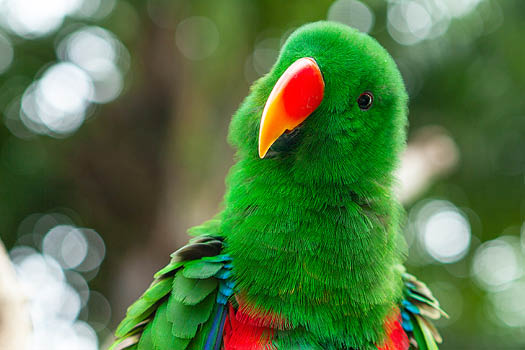Effective Ways to Care for Clown Loach in 2025
The clown loach is a captivating freshwater fish that has become a staple in aquarist communities due to its vibrant colors and playful behavior. Understanding clown loach care is essential for ensuring these lively creatures thrive in your aquarium. From tank setup to dietary needs, there are numerous factors to consider. This article will delve into effective ways to care for clown loaches, providing insights into their habitat, diet, breeding, and compatibility with other fish species.
In this guide, we will explore essential clown loach requirements, including ideal tank conditions, feeding schedules, and social behaviors. Whether you are looking to buy clown loach or simply want to enhance your knowledge, this article serves as a comprehensive resource for both novice and experienced aquarists. Let's dive into the effective methods of caring for these wonderful creatures!
So, if you are considering bringing a clown loach into your home aquarium or want to improve the lives of your current pets, read on to discover valuable tips and guidance!
Essential Clown Loach Habitat Setup
Creating the ideal environment for your clown loach is crucial for its health and well-being. These fish thrive in a well-planned aquarium that mimics their natural habitat. Considerations such as tank size, substrate, and decorations play vital roles in their care.
Choosing the Right Tank Size
Clown loaches can grow up to 12 inches in length, making tank size an important factor. A minimum of 75 gallons is recommended for a group of clown loaches to ensure ample swimming space. This size allows for their social behavior, mitigating stress and promoting a healthier lifestyle.
As clown loaches are social creatures, keeping them in groups of at least three to six will lead to better compatibility and interactions. A spacious environment accommodates their natural schooling behavior, which improves their overall happiness.
Creating the Perfect Substrate
For clown loaches, the substrate should be soft and smooth to prevent injury to their delicate bodies. Sand is often recommended, as it allows them to burrow and feel secure. Additionally, a substrate that promotes beneficial bacteria will enhance water quality, contributing to clown loach health.
Decorations like caves, rocks, and driftwood add visual interest and provide hiding spots. These elements not only enrich the environment but also serve as safe retreats during stressful situations.
Water Quality Management
Maintaining optimal water quality is paramount for clown loaches. Regular water changes of 20-30% weekly are essential to keep ammonia and nitrate levels low. Monitoring pH levels between 6.0 and 7.5 is crucial, as clown loaches thrive in slightly acidic to neutral environments.
Installing a reliable filter system ensures good water circulation and filtration. Additionally, consider adding live plants to your tank, which can help stabilize water parameters and provide additional cover for your fish.
Understanding Clown Loach Feeding Requirements
A healthy diet significantly impacts the growth and lifespan of clown loaches. To promote vibrant colors and good health, it’s important to understand their dietary preferences.
Best Food Options for Clown Loaches
Clown loaches are omnivorous, meaning they require a balanced diet consisting of both plant and animal matter. High-quality flakes or pellets specifically formulated for bottom feeders are excellent staples. Additionally, offering supplementary foods such as frozen or live foods, including bloodworms or brine shrimp, can provide much-needed variety.
It’s important to observe their feeding habits and adjust accordingly. Some clown loaches may prefer certain types of food, enhancing their growth and vitality when based on individual preferences.
Establishing a Feeding Schedule
A structured feeding schedule fosters a healthy eating routine. Feeding clown loaches two to three times a week is sufficient. It’s advisable to offer small amounts to prevent overfeeding, which can lead to water quality issues. Any uneaten food should be promptly removed to maintain a clean tank environment.
Monitoring their feeding behavior can also give insight into their health status; decreased appetite can be a sign of stress or illness.
Recognizing Clown Loach Health Indicators
Healthy clown loaches tend to be active and display vibrant colors. Watching for any changes in behavior or appearance is vital for early detection of potential health issues. Signs such as sluggishness or faded colors can indicate stress, poor water quality, or illness.
Regular health check-ups and monitoring water conditions help maintain the well-being of your clown loaches. Consulting with fish health experts can provide additional strategies for successful fishkeeping.
Clown Loach Compatibility with Other Fish Species
As community dwellers, clown loaches generally get along well with various other species. However, understanding the intricacies of clown loach compatibility enhances the success of community tank setups.
Suitable Tank Mates for Clown Loaches
When selecting tank mates for your clown loaches, consider peaceful species that share similar water requirements. Fish such as tetras, barbs, and some types of gouramis make excellent companions, as they typically exhibit compatible social behaviors.
Avoid aggressive or territorial fish species, as they can stress clown loaches and lead to injuries. Conduct thorough research on the demeanor of each species before mixing them in a community tank.
Factors Influencing Compatibility
Clown loaches exhibit specific behavioral traits that may affect their interactions with other fish. Their playful nature sometimes leads to mild bullying if not enough space is provided. Ensuring that your tank setup accommodates the needs of all species is key to fostering a harmonious living environment.
Regular observation of social interactions within the tank allows for early intervention if aggression occurs, ensuring the safety and health of all tank inhabitants.
Setting Up a Successful Community Tank
Designing a community tank requires planning. Aim for a diverse tank setup that encourages natural behaviors while maximizing compatibility among species. Incorporating various hiding spots and open swimming areas can alleviate territorial disputes.
Careful monitoring and adjusting the tank population can prevent overcrowding and resultant stress, promoting a thriving aquatic community.
Breeding Clown Loaches: What You Need to Know
Breeding clown loaches involves understanding their specific requirements for a successful spawning process. This section covers the essentials for anyone interested in breeding these fascinating fish.
Preparing for Clown Loach Breeding
To initiate clown loach breeding, create a separate breeding tank equipped with soft water and plenty of hiding spots. A well-planned tank setup encourages healthier breeding behavior.
Temperature fluctuations and water changes during the breeding season can mimic natural conditions, inciting breeding readiness. Ensure that your breeding tank provides optimum living conditions for both parents and fry.
Monitoring Breeding Behavior
Understanding clown loach breeding behavior is crucial. These fish engage in group spawning, so keeping multiple males and females together increases the chances of successful reproduction. Observe for signs of pairing, such as chasing and displaying vibrant colors.
Providing high-quality food during the breeding period promotes healthier fry outcomes.
Fry Care and Raising
After eggs are laid, the care of fry becomes a priority. Fry require smaller, finely crushed foods for successful growth. Regular water changes and monitoring water parameters are critical for maintaining health and promoting growth among the young clown loaches.
Educating yourself on fry care ensures a better survival rate for the newly hatched fish, enhancing your breeding success.
Maintaining Clown Loach Health and Well-Being
Regular maintenance and health monitoring play a crucial role in sustaining happy and healthy clown loaches. Understanding common health issues and proactive steps can enhance their longevity.
Identifying Common Diseases in Clown Loaches
Several diseases can affect clown loaches. Ich and fin rot are among the most common issues faced. Knowing the signs and symptoms of these ailments enables quick intervention and treatment.
Maintaining optimal water conditions and providing a stress-free environment minimizes the risk of illness. Stress management is essential for clown loach survival, as stressed fish are more susceptible to diseases.
Regular Health Monitoring Techniques
Establishing a routine for monitoring the health of clown loaches is vital. Regular inspections of fish behavior, gill movement, and physical appearance yield early detection of potential issues.
Documentation of health trends also assists in identifying recurring problems, leading to informed decisions regarding treatment and care.
Effective Stress Relief Methods
To promote well-being, incorporate methods for stress relief, such as adequate hiding spots and avoiding disruptive tank mates. Ensuring the tank is well-maintained, with stable water parameters, contributes significantly to overall fish health.
Regular interaction and engagement with clown loaches can enrich their environment and reduce stress, leading to happier and healthier fish.
Clown Loach FAQs
Here are some common questions parents or potential sea enthusiasts may have about clown loach care and maintenance.
How much do clown loaches usually cost?
Clown loach prices can vary depending on size and location but typically range from $10 to $30 each. It's essential to check multiple aquarium fish stores to find good deals.
What is the average lifespan of a clown loach?
Under optimal care conditions, clown loaches can live for 10-15 years in a well-maintained aquarium, making them a long-term commitment for aquarists.
Can clown loaches live with shrimp?
Clown loaches can sometimes display investigative behavior towards shrimp, but larger shrimp species may be safe. Monitoring behaviors during the introduction phase is advisable.
What are the best accessories for clown loach habitat?
Key clown loach accessories include caves, plants, and a quality filtration system. These items create an enriching environment, promoting health and well-being.
How do I maintain clown loach health?
Regular water changes, optimal feeding habits, and monitoring tank conditions are crucial for maintaining clown loach health, minimizing stress, and preventing disease.
 example.com/image2.png
example.com/image2.png
 example.com/image3.png
```
example.com/image3.png
``` 